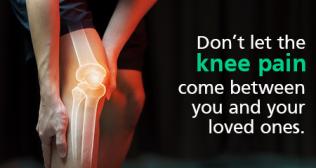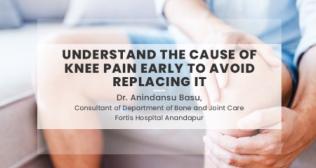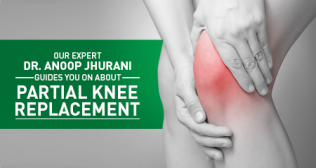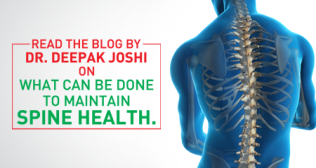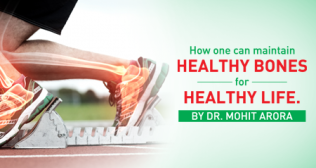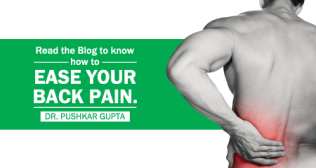
Shoulder Dislocation: Causes and 5 Immediate Steps to Take
The shoulder is the most mobile joint in the human body. Its remarkable range of motion allows us to lift, reach, and throw with incredible versatility. However, this same mobility comes at a cost: a relative lack of stability, which makes the shoulder joint highly susceptible to injury. One of the most common and painful of these injuries is a dislocated shoulder, an event that requires immediate medical attention to prevent long-term damage.
A dislocation is a serious injury that goes far beyond a simple sprain. The force required to pop the shoulder out of its socket can cause significant damage to the surrounding ligaments, tendons, and nerves. Knowing the causes, recognizing the symptoms, and, most importantly, understanding the correct immediate actions to take are critical for a safe and successful recovery.
What Happens During a Shoulder Dislocation?
The shoulder joint is a ball-and-socket joint. The "ball" is the top of your upper arm bone (the humeral head), and the "socket" is a shallow, cup-shaped part of your shoulder blade called the glenoid. A dislocated shoulder occurs when a forceful impact or extreme rotation causes the humeral head to slip completely out of the glenoid socket.
In over 95% of cases, the dislocation is anterior, meaning the ball slips out toward the front of the body. Less commonly, it can be posterior (slipping out the back) or inferior (slipping downward).
Common Causes of a Dislocated Shoulder
A shoulder dislocation is almost always the result of a traumatic injury or significant force.
- Sports Injuries: This is a very common cause. Contact sports like football and hockey, as well as sports that involve falls, such as skiing, gymnastics, and volleyball, put athletes at high risk.
- Falls: A hard fall onto an outstretched arm or directly onto the shoulder is a frequent cause, especially in older adults.
- Trauma: A direct, forceful blow to the shoulder, such as in a motor vehicle accident, can easily knock the joint out of place.
- Underlying Instability: Some individuals have naturally looser ligaments in their shoulders (a condition known as laxity), which can make them more prone to dislocations with less force.
Recognizing the Dislocated Shoulder Symptoms
The dislocated shoulder symptoms are typically immediate, severe, and unmistakable. It is a very painful injury that leaves little doubt that something is seriously wrong.
Key Signs of a Dislocation
- Intense, Severe Pain: This is the most prominent symptom.
- Visible Deformity: The shoulder will look visibly "out of place." You may see a bump or bulge in front of or below the shoulder, and the normal rounded contour of the shoulder will be lost, appearing squared-off.
- Inability to Move the Arm: Any attempt to move the arm will be met with extreme pain and resistance. The person will instinctively hold their arm close to their body, often supported by their other hand.
- Swelling and Bruising: These will develop rapidly around the joint.
- Muscle Spasms: The muscles around the shoulder may spasm as they try to protect the injured joint, which can increase the pain.
- Numbness or Weakness: A feeling of numbness, tingling, or weakness down the arm or in the hand can occur if the nerves around the shoulder have been stretched or damaged.
5 Immediate Steps to Take for a Suspected Dislocation
If you suspect you or someone else has a dislocated shoulder, your immediate actions are critical. The wrong moves can cause further damage.
1. Do Not Try to Pop It Back In
This is the most important rule. Never attempt a shoulder dislocation reduction yourself or let anyone other than a trained medical professional try to do so. You can easily cause severe and permanent damage to the nerves, blood vessels, ligaments, and cartilage in the joint.
2. Immobilize the Arm
The goal is to keep the shoulder as still as possible to prevent further injury and reduce pain. If possible, create a simple sling using a piece of cloth, a belt, or a shirt to support the weight of the arm and hold it gently against the body.
3. Apply Ice
Applying a cold pack or a bag of ice wrapped in a towel to the shoulder area can help numb the pain and reduce some of the initial swelling while you are on your way to get help.
4. Do Not Eat or Drink Anything
It is important to avoid eating or drinking. In the event that the doctor needs to give you a sedative or anesthetic to perform the reduction, or if a shoulder dislocation surgery is unexpectedly required, having an empty stomach is a necessary safety precaution.
5. Seek Immediate Medical Attention
A dislocated shoulder is a medical emergency. Go to the nearest hospital emergency room or an urgent care clinic with orthopedic capabilities as soon as possible.
Professional Shoulder Dislocation Treatment
Once you are under medical care, the treatment process is systematic.
- Diagnosis: A doctor will perform a physical exam and order X-rays to confirm the dislocation and, crucially, to check for any associated fractures of the bone.
- Reduction: The process of putting the ball back into the socket is called a shoulder dislocation reduction. The doctor will administer pain medication and often a muscle relaxant or sedative to help your muscles relax. They will then use gentle, steady traction and manipulation to guide the humeral head back into place.
- Post-Reduction Care: After a successful reduction, your arm will be placed in a sling to immobilize it for several weeks to allow the damaged ligaments and tissues to begin healing.
- Rehabilitation: This is a vital part of the shoulder dislocation treatment. Once the initial healing period is over, a physical therapist will guide you through a program of exercises to restore your range of motion, strengthen the rotator cuff and shoulder blade muscles, and improve the stability of the joint.
When is Shoulder Dislocation Surgery Necessary?
For many people, a first-time dislocation can be managed successfully without surgery. However, a shoulder dislocation surgery may be recommended in several situations:
- Recurrent Instability: If your shoulder continues to dislocate easily, surgery may be needed to repair and tighten the torn ligaments and joint capsule.
- Significant Tissue Damage: If the initial dislocation caused a significant tear of the labrum (the cartilage rim of the socket) or the rotator cuff tendons.
- "Bankart" or "Hill-Sachs" Lesions: These are specific types of damage to the cartilage and bone that occur during dislocation and make the joint more unstable.
- High-Risk Individuals: Young athletes who participate in high-contact sports may be offered surgery after a first-time dislocation to reduce the very high risk of it happening again.
A Focus on Safe and Full Recovery
A dislocated shoulder is a significant injury that requires immediate and correct medical care. Attempting to fix it yourself is dangerous and can lead to lasting complications that compromise the future health of your joint.
By following the proper first-aid steps and entrusting your care to a medical professional, you ensure the safest path forward. Diligent adherence to the prescribed rehabilitation program is then the key to regaining strength and preventing future instability.
Frequently Asked Questions
1. How long does it take to recover from a dislocated shoulder?
Ans. Full recovery can take several months. While you may be out of a sling in a few weeks, it will take a dedicated physical therapy program of 12-16 weeks or more to restore full strength and stability.
2. Will my shoulder dislocate again?
Ans. The risk of a repeat dislocation is high, especially in younger, active individuals. Adhering to your physical therapy program to strengthen the surrounding muscles is the best way to reduce this risk.
3. What is the difference between a shoulder dislocation and a shoulder separation?
Ans. A dislocation is when the ball of the upper arm bone comes out of the shoulder socket. A separation is an injury to the ligaments that connect the collarbone (clavicle) to the shoulder blade.
4. Can I prevent a shoulder dislocation?
Ans. While you can't prevent the accidents that often cause them, you can reduce your risk by maintaining good shoulder strength and flexibility through regular exercise and by using proper techniques in sports.
5. Is a closed reduction painful?
Ans. The dislocation itself is very painful. The reduction procedure is performed after you have been given strong pain medication and/or sedation to make you as comfortable as possible. You will feel immediate relief once the shoulder is back in place.








